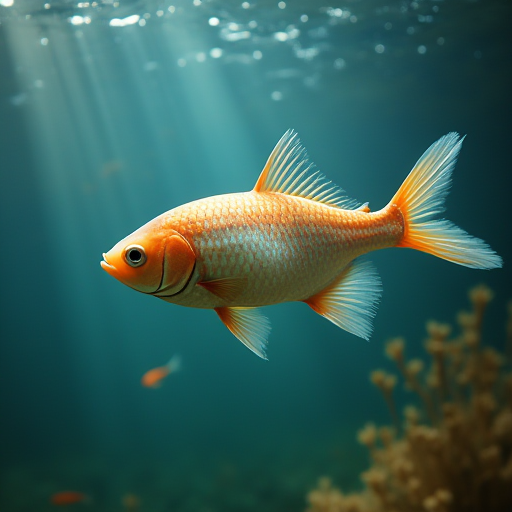
Why Do Fish Swim?
Fish are fascinating creatures that inhabit a wide variety of aquatic environments, from the shallowest streams to the deepest oceans. One of the most characteristic behaviors of fish is their ability to swim. But why do fish swim? This article explores the reasons behind this behavior, the mechanics of fish swimming, and the adaptations that make swimming possible.
The Purpose of Swimming
Survival and Predation
For fish, swimming is primarily a means of survival. The aquatic environment is dynamic and often hostile, with predators lurking in every corner. Swimming allows fish to quickly escape predators, seek shelter, and avoid danger. Conversely, swimming is also essential for predation, allowing fish to pursue and capture prey effectively.
Foraging and Energy Efficiency
Fish swim in search of food, which is crucial for their growth and reproduction. Swimming enables fish to move to different areas to find food, follow prey migrations, or exploit seasonal food availability. Fish have evolved to swim efficiently, using minimal energy to maximize their foraging success.
Reproduction
Swimming plays a vital role in the reproductive cycle of fish. Many species migrate long distances to reach spawning grounds. For example, salmon swim upstream to freshwater rivers to spawn. Swimming is also integral during courtship rituals, where males and females perform specific movements to attract a mate.
Navigation and Habitat Exploration
Fish swim to explore their surroundings and navigate through complex environments. This ability helps them locate suitable habitats with optimal conditions for survival, such as the right temperature, salinity, and oxygen levels. Swimming also aids in maintaining the fish's position within its preferred habitat, avoiding being swept away by currents.
The Mechanics of Swimming
Body Structure and Movement
The body structure of fish is designed for efficient swimming. Most fish have a streamlined shape that reduces drag and allows for smooth movement through water. Fish swim primarily by flexing their bodies and tails side to side, a motion known as undulation. This movement generates thrust, propelling the fish forward.
Fins and Their Functions
Fins are crucial for swimming, providing stability, direction, and propulsion. Different fins serve various functions:
- Caudal (Tail) Fin: The primary source of propulsion, helping the fish move forward.
- Pectoral Fins: Used for steering, braking, and stability.
- Pelvic Fins: Help with balance and stopping.
- Dorsal and Anal Fins: Provide stability, preventing rolling and aiding in sharp turns.
Buoyancy Control
Fish have developed mechanisms to control their buoyancy, allowing them to maintain their position in the water column without expending much energy. The swim bladder, a gas-filled organ, helps fish adjust their buoyancy. By regulating the gas volume in the swim bladder, fish can rise or sink in the water.
Adaptations for Swimming
Muscle Composition
Fish have specialized muscle fibers that enable different swimming speeds and endurance levels. For example, red muscle fibers are rich in mitochondria and support sustained swimming, while white muscle fibers provide short bursts of speed.
Lateral Line System
The lateral line system is a sensory organ that detects water vibrations and pressure changes. This system helps fish navigate, avoid obstacles, and detect prey or predators, enhancing their swimming efficiency.
Evolutionary Adaptations
Over millions of years, fish have evolved various adaptations to suit their specific environments. For instance, eel-like fish have elongated bodies for navigating tight spaces, while fast-swimming fish like tuna have fusiform shapes and powerful tails for high-speed swimming.
Conclusion
Swimming is an essential behavior for fish, driven by the need for survival, feeding, reproduction, and exploration. The mechanics of swimming are supported by a fish's streamlined body, specialized fins, buoyancy control, and sensory adaptations. These features have evolved over time to enable fish to thrive in diverse aquatic environments. Understanding why and how fish swim not only highlights the intricacies of aquatic life but also underscores the remarkable adaptations that have allowed fish to become one of the most successful groups of vertebrates on the planet.
